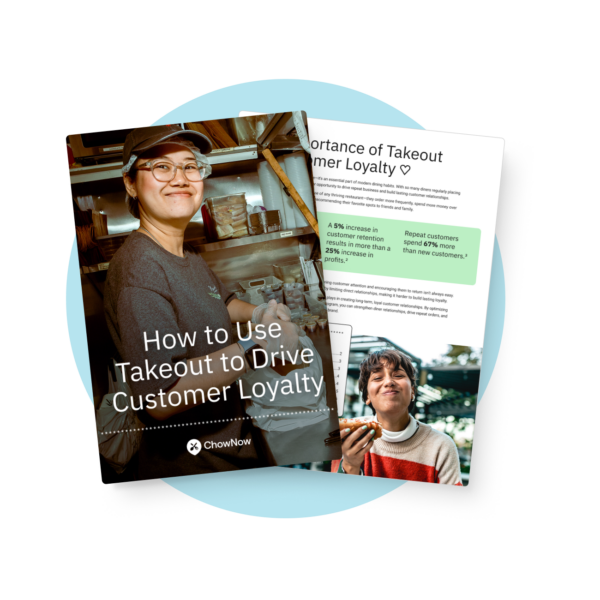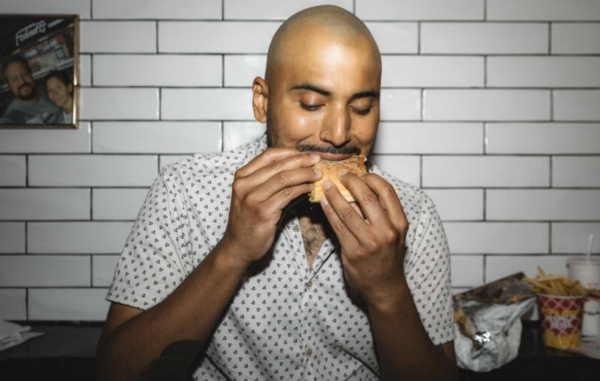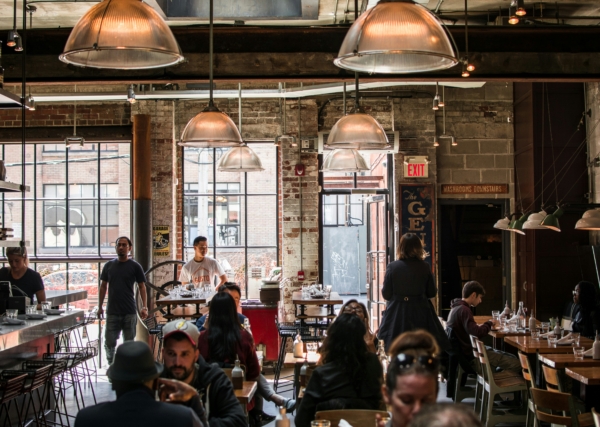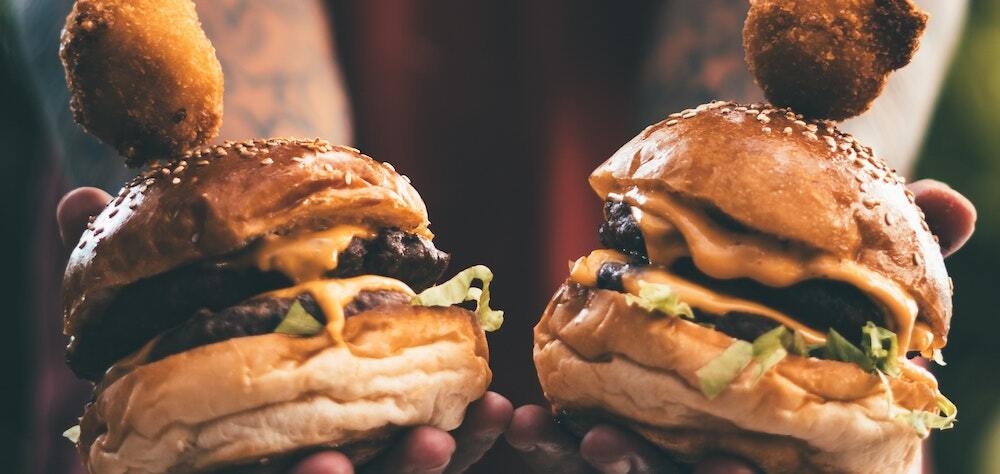Restaurant Marketing Budget: How to Spend Smarter and Grow Faster

Building a restaurant marketing budget can feel overwhelming. With tight margins, unpredictable cash flow, and endless marketing options, it’s hard to know how much to spend—or where to spend it.
Many operators worry about wasting money on the wrong strategies or not seeing a return on investment, making it tempting to avoid marketing altogether.
But without a clear budget, your restaurant risks losing customers to competitors who consistently promote their business.
The good news?
Creating an effective marketing budget doesn’t have to be all that complicated.
By setting clear goals, prioritizing the right channels, and making adjustments strategically, you can maximize your marketing dollars and drive more traffic to your restaurant.
In this guide, you’ll learn how to create a budget that works for your business without overspending or second-guessing every decision.
Why Your Restaurant Marketing Budget Matters

Marketing isn’t just an expense, it’s an investment in your restaurant’s growth and future. Many businesses struggle to maximize their marketing budgets, making strategic planning essential for success. A well-planned budget helps you:
- Attract new customers by increasing visibility and awareness.
- Drive repeat business through loyalty programs, email campaigns, and promotions.
- Increase sales by promoting high-margin menu items and special offers, directly impacting restaurant sales and contributing to overall industry revenue.
On the flip side, failing to invest in marketing initiatives can be costly:
- Under-investing means fewer customers—if people don’t know about your restaurant, they won’t visit.
- Spending without a plan wastes money—without a strategy, marketing dollars can just disappear with zero results to speak of.
- Ignoring marketing puts you behind competitors who actively promote their business.
Understanding the importance of a marketing budget, you can confidently invest in strategies that drive real revenue without wasting money on approaches that don’t work. Having that in a well-structured restaurant marketing plan not only guides your spending but also supports sustainable growth by ensuring your efforts are scalable and effective over time.
In the next section, we’ll break down five practical steps to building a comprehensive restaurant marketing budget that will give you the clarity and confidence to invest in the right strategies and drive real results.
Get An Understanding of Your Current Financial Landscape

Before setting a marketing budget, you need a clear picture of your restaurant’s financial health. Start by evaluating your total revenue and overall budget to determine how much you can realistically invest in marketing.
- Set a percentage of revenue for marketing: Industry benchmarks suggest that restaurants typically spend 3-6% of their revenue on marketing, but the right percentage for you depends on factors like business size, growth goals, and competition. Many smaller companies allocate a higher percentage of their total marketing budget compared to larger firms. Your marketing budget should be based on projected revenue and company budgets to ensure it aligns with your business objectives and industry standards.

- Factor in seasonal trends: If your restaurant has seasonal peaks and slow periods, adjust your total budget accordingly. You might need to spend more on marketing before busy seasons and scale back during slower months.
- Consider market conditions: Shifts in the economy, rising food costs, and local competition can all impact how much you should invest in marketing. The growth stage of your restaurant can also influence your marketing budget allocation, as high-growth businesses may need to invest more aggressively. A flexible budget allows you to adapt to changes without overspending.
Fully understanding your restaurant’s financial landscape means you’re prepared for the months ahead. Also, aligning your marketing budget with your growth stage and overall budget ensures strategic and sustainable planning. This will make your budget strategic and sustainable, allowing you to make smart, informed decisions.
Set Clear Goals for your Marketing Efforts

Think of your marketing goals like a GPS for a road trip. Without it, you’re just driving around aimlessly, burning fuel without knowing if you’re getting anywhere.
To get the most out of your marketing budget, be very clear with your marketing objectives.
- Are you trying to increase foot traffic? Promotions, local SEO, and social media ads can help bring more people through your door.
- Do you want to drive more online orders? Investing in digital ads, email marketing, and an optimized online ordering system that can boost sales.
- Is brand awareness your main focus? A strong social media presence, community partnerships, and local events can get your name in front of more potential customers and help build awareness.
- Looking to promote new menu items? Targeted email campaigns, influencer partnerships, and limited-time offers can generate interest.
- Are you focused on customer retention? Loyalty programs, personalized offers, and excellent service can keep your existing customers coming back.
- Is new customer acquisition a priority? Special promotions, referral programs, and targeted advertising can help attract new guests.
Lead generation can also be a specific marketing objective for restaurants, supporting both new customer acquisition and overall revenue growth.
Once you’ve set your goals, link them to measurable outcomes. Track key metrics like return on investment (ROI), customer acquisition cost (CAC), and conversion rates to see what’s working and where to adjust.
When every dollar is tied to a clear objective, your marketing budget is no longer just an expense—it’s a vital tool for growth. These goals should be part of your overall marketing plan to ensure your efforts are strategic and aligned with your business priorities.
Pick Marketing Channels that Match Your Budget and Goals

Not all marketing channels are created equal, especially when you have a limited budget. You can break marketing into two main categories: digital and traditional marketing.
The key is to select the right marketing mix and develop a clear marketing strategy that aligns with your goals, available resources, and, most importantly, your target audience. Understanding your target audience is essential for choosing the most effective marketing channels and ensuring your marketing activities deliver the best results.
Digital and traditional marketing represent different marketing activities and marketing methods. Each offers unique opportunities for reaching your target audience and should be considered as part of your overall marketing mix.
Digital Marketing Channels
If you’re looking for cost-effective, targeted ways to reach customers, digital marketing channels are the superior method:
- Social Media (Instagram, Facebook, TikTok, etc.) – Great for brand awareness, promotions, and engaging with customers. Social media marketing is a cost-effective strategy that helps build customer relationships and increase profits.
- Email Marketing – Ideal for building loyalty with repeat customers through special offers and updates.
- SMS Marketing – Perfect for sending time-sensitive promotions, reservation reminders, and personalized offers directly to customers’ phones.
- Online Ads (Google, Facebook, Yelp, etc.) – Allows for precise targeting, ensuring you reach people actively looking for dining options. Paid advertising through these platforms is an effective way to access targeted audiences and measure your return on investment.
- Website development – Also an essential part of your digital marketing efforts as it includes costs like hosting, domain registration, and professional design services necessary for a strong online presence.
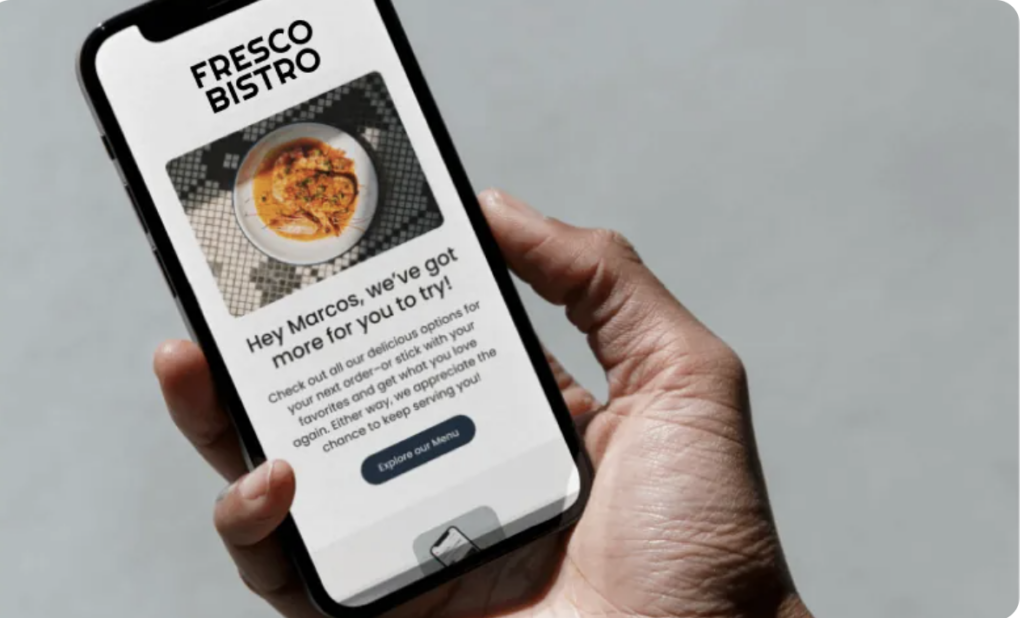
Traditional Marketing Channels
While digital is dominant, traditional marketing methods, such as flyers, direct mail, and print ads, can still be useful in a tech-focused world, especially when trying to connect with locals:
- Flyers and Direct Mail – Useful for promoting new menu items, grand openings, special events, or upcoming events. These traditional advertising formats remain effective for reaching local audiences.
- Local Events – Increases brand visibility within the community and attracts new customers. Public relations efforts play a key role in event promotion, helping manage brand reputation and maximize event impact.
- Partnerships with Local Businesses – Collaborating with nearby stores, gyms, or offices can help drive foot traffic.
View this post on Instagram
When choosing the right channels, consider factors like who your customers are, where they spend their time, and how much your budget will allow you to spend.
A small budget might mean focusing on organic channels like social media and email marketing, while a larger budget could include paid ads and restaurant events.
Spend Your Budget Where It Makes the Biggest Impact
A successful marketing budget isn’t about being everywhere—it’s about being where your customers are and planning your marketing campaigns for maximum impact.
Focus on channels that connect most with your audience and directly support your business goals.

- Prioritize high-impact channels that have the best return for your restaurant, whether that’s social media ads, email marketing, or local events.
- Allocate spending strategically—if your goal is to increase online orders, invest more in digital marketing; if you rely on foot traffic, local collaborations and signage may be more effective.
- Avoid spreading your budget too thin—it’s better to do a few things well than to invest small amounts in too many places with little impact.
- Track every dollar’s purpose—ensure every marketing cost and marketing expense aligns with your main objectives, whether it’s attracting new customers, driving repeat visits, or increasing average order value.
Above all, make sure every dollar spent supports your specific marketing goals and marketing campaigns. It’s better to invest heavily in two or three high-performing channels than to spread your budget across ten that deliver little return. Use ROI analysis and review historical performance to guide your decisions and optimize your marketing efforts.
Start small, track your results, and identify and eliminate excess and unnecessary costs or unnecessary costs, then scale up as you discover what works and what doesn’t. When testing new strategies, include experimental tactics as part of your marketing approach.
Track What’s Working and Shift When Needed

Creating a marketing budget is a crucial part of your business operations. This shouldn’t be etched in stone as it should evolve based on what’s delivering results. That means keeping an eye on several key metrics that tell you what’s working.
Important metrics to monitor include:
- Cost per lead (CPL): How much does it cost to attract a potential customer? You can find this by dividing your total marketing spend by the number of customers gained. For example, if you spend $200 on Facebook ads and get 20 new customers, your CPL is $10.
- Return on ad spend (ROAS): For every dollar spent on ads, how much revenue do you generate? Most advertising platforms, like Google and Facebook, provide this data in their reporting tools. If you spend $500 on ads and those ads generate $2,000 in revenue, your ROAS is 4:1 (meaning you earn $4 for every $1 spent).
- Customer lifetime value (CLV): How much is a customer worth over time? This is an estimate based on how often a customer orders from you and their average spend per visit. If a regular customer orders once a month, spending $30 each time, and stays loyal for two years, their CLV would be $720.
By monitoring these numbers, your marketing team can see which efforts are driving real results and which need adjustments. The team plays a key role in creating a marketing budget, tracking performance, and making necessary changes to maximize ROI.
For example, if a paid ad campaign isn’t generating enough sales, you might shift that budget to organic social media or email marketing instead.

Flexibility is key. Your restaurant’s needs will change throughout the year and so should your budget.
Consider budgeting a portion of your marketing funds to go toward testing new strategies and seeing how customers respond. Creating a marketing budget allows you to allocate resources specifically for experimentation, helping you discover what works best for your business.
When you track, analyze, and adjust, you’ll ensure that your marketing budget consistently delivers the biggest returns on the money you’ve put into it.
Integrating budget planning into your business operations by creating a marketing budget and involving your marketing team ensures ongoing success and adaptability in a changing market.
Watch Out for These 3 Restaurant Marketing Budget Mistakes
Marketing is one of the best investments you can make for your restaurant if you approach it the right way, but as with any investment, there’s always an element of risk involved.
Avoid these common restaurant marketing mistakes and you’ll mitigate that risk.
1. Overspending on Ineffective Strategies
Not all marketing efforts will yield strong results, and some channels may not work for your restaurant at all. If a particular ad campaign, social media strategy, or promotion isn’t delivering measurable returns, don’t keep pouring money into it. Regularly review your performance data to cut waste and shift funds to what’s actually working.
2. Not Taking Advantage of Free or Low-Cost Marketing Opportunities
Many restaurant owners assume marketing requires a big budget, but some of the most effective strategies cost little to nothing. Leverage word-of-mouth, customer referrals, organic social media, SEO, and collaborations with nearby businesses to promote your restaurant without breaking the bank.

3. Forgetting Hidden Costs
Marketing isn’t just about ad spend. You also need to account for software fees, website hosting, email marketing tools, photography, and even staff time. If you’re running a loyalty program or offering promotions, consider the impact of discounts on your overall revenue. A well-planned budget includes all these costs upfront to avoid surprises.
Not getting caught in these common marketing traps means you’ll have leaner, more efficient marketing strategies, saving you a ton of time, money, and headache.
Make Every Marketing Dollar Count
Marketing doesn’t need to feel overwhelming or intimidating. Start small—there’s nothing that says you have to invest a ton of money into it right away; just start somewhere.
If you’d like to learn about how ChowNow’s marketing tools, such as Automated Email Marketing can benefit your restaurant and simplify your budget, book a demo.
Restaurant Marketing Budget Frequently Asked Questions
How much should a restaurant spend on marketing?
Most restaurants allocate their marketing budget allocation between 3–6% of their revenue to marketing. However, the ideal percentage depends on your goals—new or fast-growing restaurants may invest up to 10–25%, while established businesses might stick to a lower range based on steady traffic and brand recognition.
Why is a restaurant marketing budget important?
A marketing budget helps you strategically invest in customer acquisition and retention. It ensures you’re spending on tactics that deliver results instead of wasting money on ineffective channels.
How do I decide where to spend my restaurant marketing budget?
Start by setting clear marketing plans, like boosting online orders, increasing foot traffic, or launching a new menu item, then choose the marketing channels that best support those outcomes. Track results regularly and focus on the platforms that show the highest return.
How can I calculate ROI on my restaurant marketing efforts?
Start by tracking metrics like return on ad spend (ROAS), cost per lead (CPL), and customer lifetime value (CLV). Use tools or an analytics dashboard to connect sales data with your campaigns. If your marketing efforts are consistently driving repeat orders, higher average checks, or improved online visibility, you’re seeing a strong return on investment.
Which digital channels work best for restaurants?
Digital channels like social media, email marketing, and Google Ads deliver high ROI because they connect you directly with local diners. Social media builds community, email keeps loyal guests engaged, and paid media helps attract new customers searching for nearby dining options. For small businesses, even low-cost organic strategies can make a big impact when used consistently.
What’s a good marketing investment for a small restaurant?
If you’re running a small business, focus your marketing investment on a few high-impact tactics instead of spreading your budget too thin. That means doubling down on social media marketing, local SEO, and email campaigns before exploring paid media. The goal is to build awareness and trust without overspending.
How should new restaurant owners approach marketing in their first year?
For new restaurants, visibility is everything. Start with low-cost digital channels like social media and Google Business Profile updates to get discovered online. Invest gradually in paid promotions, community partnerships, and review-building campaigns as your customer base grows. Set aside a flexible budget for experimentation and track what brings in real diners before scaling.
